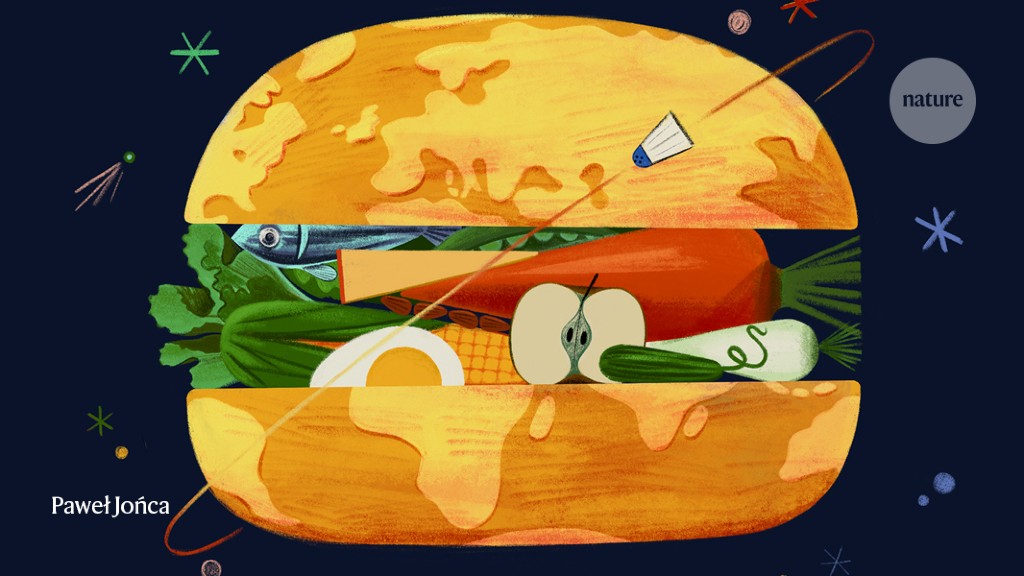The Reality of Children's Nutrition in Kenyan Fishing Villages
Core Concepts
The author highlights the nutritional challenges faced by children in Kenyan fishing villages, emphasizing the prevalence of stunted growth despite living near abundant seafood sources.
Abstract
In a cluster of fishing communities along the Kilifi coast in Kenya, where a variety of edible marine life thrives, children predominantly consume ugali, a maize-based staple. Despite their proximity to seafood resources, these children suffer from stunted growth at a rate double the national average. The reliance on plant-based nutrition over locally available seafood raises concerns about the adequacy of their diets and overall health.
What humanity should eat to stay healthy and save the planet
Stats
Almost half the kids in the villages have stunted growth — twice the national rate.
Quotes
"Almost half the kids here have stunted growth — twice the national rate."
Key Insights Distilled From
by Gayathri Vai... at www.nature.com 03-04-2024
https://www.nature.com/articles/d41586-021-03565-5
Deeper Inquiries
How can access to diverse nutrition be improved in these fishing villages?
Access to diverse nutrition in the fishing villages near Kilifi, Kenya, can be enhanced through a multi-faceted approach. Firstly, education and awareness programs can be implemented to inform the community about the nutritional benefits of seafood and other protein-rich sources. This could involve workshops, cooking demonstrations, and collaborations with local health professionals.
Secondly, efforts should be made to improve infrastructure for storing and distributing seafood. This may include setting up refrigeration facilities or establishing partnerships with nearby markets or suppliers to ensure a steady supply of fresh fish.
Additionally, promoting sustainable fishing practices within the community can help maintain a healthy marine ecosystem while ensuring a long-term source of nutritious food. Encouraging responsible fishing techniques and supporting initiatives that protect marine biodiversity will contribute to both environmental conservation and food security.
What cultural or economic factors contribute to the preference for plant-based diets over seafood?
Several cultural and economic factors influence the preference for plant-based diets over seafood in these fishing villages. Historically, certain communities may have developed traditions around specific foods based on availability or religious beliefs. In this case, reliance on maize flour (ugali) as a staple food could stem from cultural norms passed down through generations.
Economically, access to affordable sources of protein such as fish might be limited due to factors like fluctuating market prices or lack of infrastructure for preserving seafood. As a result, households may opt for plant-based alternatives that are more readily available and cost-effective.
Furthermore, perceptions around taste preferences play a role in dietary choices. If children in these villages are not accustomed to consuming seafood regularly due to cultural practices or personal preferences shaped by their upbringing, they may develop aversions towards trying new foods like fish or octopus.
How can local initiatives promote sustainable and nutritious dietary practices among these communities?
Local initiatives play a crucial role in promoting sustainable and nutritious dietary practices among communities near Kilifi. One effective strategy is engaging community leaders and influencers who can advocate for balanced diets that incorporate locally sourced ingredients like seafood alongside traditional staples.
Collaborating with local fishermen's cooperatives can also help raise awareness about sustainable fishing methods while creating direct pathways for villagers to access fresh catch at fair prices. By empowering small-scale fishers through training programs on resource management and market linkages, communities can benefit from increased availability of nutrient-rich foods without depleting marine resources.
Moreover, integrating nutrition education into school curricula ensures that young individuals are equipped with knowledge about healthy eating habits early on. By partnering with schools or youth organizations for interactive sessions on balanced diets featuring both plants and proteins from the sea, long-lasting behavioral changes towards healthier food choices can be fostered within the community.
0
